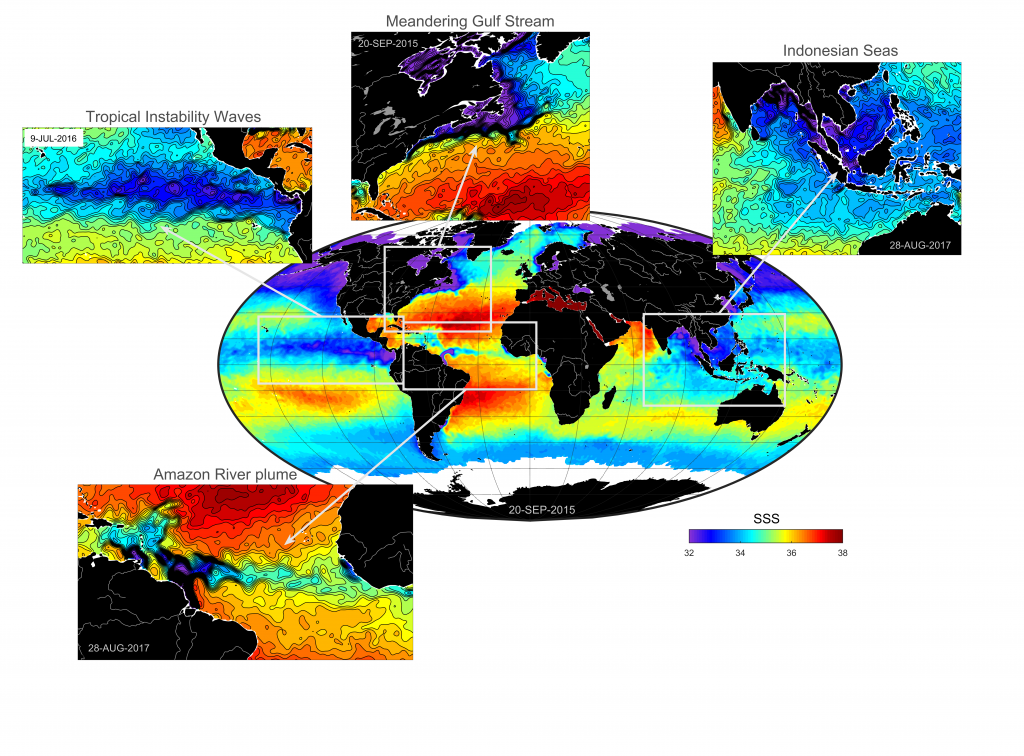Sea Surface Salinity Optimum Interpolation analysis (OISSS), a NASA funded research project, is a global SSS dataset derived from satellite L-band radiometer measurements.
Sea surface salinity (SSS) is one of the most important climate variables and a key indicator of changes in the marine hydrological cycle. Characterizing, quantifying, and understanding the distribution of SSS and its variability is crucial for understanding changes in the regional and global climate and for climate monitoring and prediction. The nature of climate change, and the ability to predict it, places a particular focus on long and continuous SSS data records from satellite measurements.
Recognizing the importance of satellite SSS data and the need for a consistent, continuous, long-term, high-quality, high-resolution SSS dataset for ocean research and applications, this project builds such a dataset from multi-satellite measurements.
The multi-mission OISSS dataset is constructed by combining bias-adjusted observations from different satellite missions. The primary input data are from two NASA’s satellite missions. The beginning segment, from September 2011 to June 2015, utilizes SSS data from the Aquarius/SAC-D satellite and is based on Optimum Interpolation (OI) analysis. The analysis uses a dedicated bias-correction algorithm to correct the satellite retrievals for large-scale biases with respect to in-situ data. The time series is continued with the Soil Moisture Active-Passive (SMAP) satellite SSS data provided by Remote Sensing Systems (RSS). SMAP OISSS fields are produced from level 2 (swath) data using the same OI algorithm. To ensure consistency and continuity in the data record, SMAP OISSS fields are further adjusted using a set of optimally designed spatial filters to reduce small-scale noise and, at the same time, to ensure that the data record is consistent across the scales. For the overlap period (April-May 2015), the data from the two satellites are combined together to ensure a smooth transition from one dataset to another. Measurements from ESA’s Soil Moisture and Ocean Salinity (SMOS) satellite are used to fill gaps in SMAP observations during the periods when the SMAP satellite was in a safe mode and did not deliver scientific data.
The consistency and accuracy of the OISSS dataset have been evaluated against in-situ salinity from Argo floats and moored buoys. The global mean root-mean-square difference (RMSD) between the OISSS and concurrent in-situ data is around 0.19 psu. The estimated spatial feature resolution of the gridded fields is about 120 km. The product follows CF/ACDD metadata conventions and includes an estimated SSS uncertainty field.
Version 2.0 of the OISSS product recently released includes formal uncertainty, an improved bias-correction algorithm, improved spatial coverage (it covers internal seas such as the Mediterranean), and is based on the newest Aquarius (version 5.0), SMAP (RSS version 5.0) and SMOS (Level 2 OS version 700) data. Example plots of the OISSS fields to illustrate coverage and resolution are shown below.

